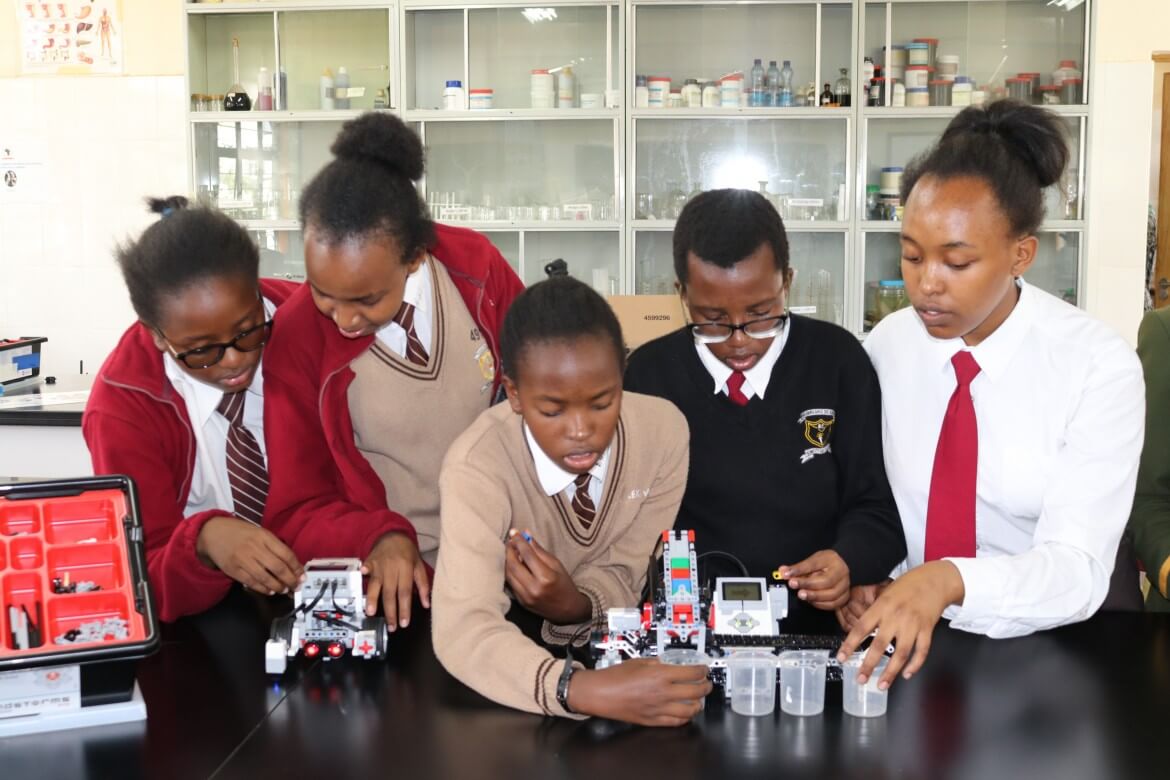advertisement
CEMASTEA, Ministry of Education partner to heighten the learning of science and mathematics
The Centre for Mathematics, Science and Technology Education in Africa (CEMASTEA) has started working with the Ministry of Education to…

The Centre for Mathematics, Science and Technology Education in Africa (CEMASTEA) has started working with the Ministry of Education to enhance the uptake and persuasion of Science, Technology, Engineering and Mathematics (STEM)courses right from the lower levels of education.
Established in 2004 to provide In-Service Education and Training (INSET) for mathematics and science teachers in Kenya and Africa, CEMASTEA has since been tasked by the Ministry of Education to roll out the STEM Model Schools intervention program, which was first launched on 2nd September, 2016. The aim of the program is to motivate and inspire students to excel in STEM subjects and pursue STEM related courses even into Kenya. The STEM program falls under the Special Programs at CEMASTEA.
CEMASTEA has consequently pushed support for the schools as they develop across various levels of the program, supplying teaching and learning equipment such as robotics kits, laptops, cathode ray oscilloscopes, LCD projectors, digital cameras, white-boards, light microscopes, among others alongside sensitizing principals and chairpersons of the STEM school boards of management. In addition, 306 teachers from the STEM schools have been trained per year since 2017.
advertisement
It purposes to improve the quality of teaching mathematics and science education by enhancing pedagogical skills of teachers which in turn is expected to help young Kenyans in schools develop and acquire relevant core competences such as communication and collaboration, critical thinking and problem solving, creativity and imagination, citizenship, self- efficacy, digital literacy and learning to learn.
Currently, 102 schools have been selected and are being transformed into STEM Model Schools to be role models of STEM activities that can be replicated in other schools in the neighborhood. To become a STEM Model School, each school is expected to progress through the four levels namely: Emerging, Developing, Accomplishing and Practicing. CEMASTEA is working with the Ministry of Education to have the number of STEM model schools increased.
The STEM field is greatly promoted as a career path for students in recent years, and the demand for individuals specializing in STEM disciplines is expected to rise. One unique aspect of STEM is its role in helping to improve our well- being as individuals and society as a whole, not only through improvements in fields such as technology and medicine but also as a stimulus for promoting improvements in the community and beyond.
advertisement
In spite of Kenya being a rapidly developing and industrializing nation that needs to bridge its skills-gap with respect to 21st Century skills, only 22% of students undertaking university education pursue courses in STEM compared to their Asian Tigers counterparts, from South Korea and Singapore, who stand at 70%.
CEMASTEA is also mandated to offer continuous Teacher Professional Development (TPD) in Mathematics and Science Education (TPD-MSE), its vision and mission being ‘Excellence in Teacher Professional Development in Africa and Transforming teaching by continuously developing competencies for effective curriculum delivery and improved quality of education’ respectively.
In line with Kenya’s Vision 2030 of providing a globally competitive quality education, training and research to her citizens for development and individual well-being, the Ministry of Education endeavors to improve the quality of education in Kenya. Thus, CEMASTEA carries out INSET for mathematics and science teachers at the basic level of education; developing innovative teaching approaches and conducting seminars and workshops for school leaders funded by the Ministry of Education.
advertisement
The CEMASTEA STEM Model Schools program is in line with the Basic Education Curriculum Reform Framework (BECRF) by Kenya Institute of Curriculum Development (KICD) which introduces science and technology as a learning area to enable learners to prepare for STEM pathway in subsequent levels of education cycle while CEMASTEA’s training programs are organized under Primary, Secondary, Partnerships, Linkages and International Training, ICT integration in teaching and learning and special training programs.